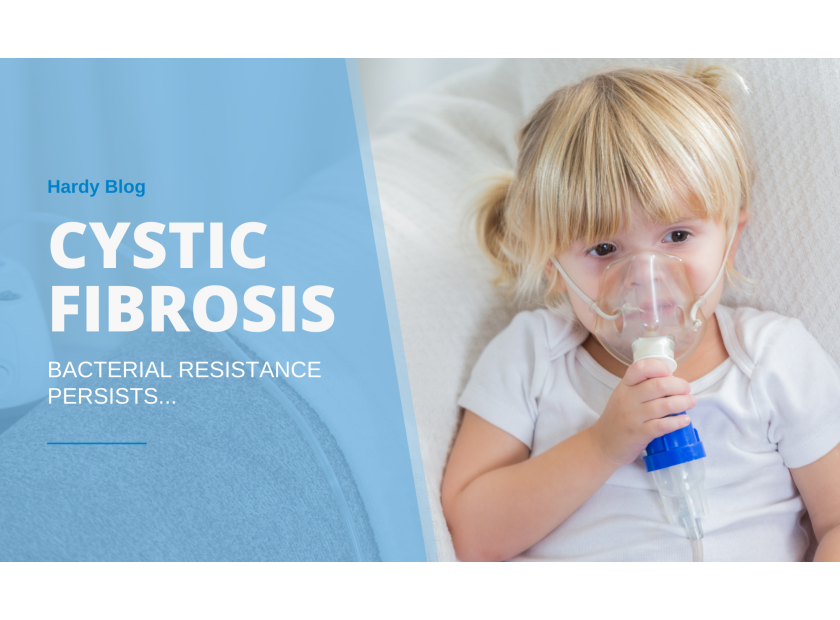Is progress being made against Cystic Fibrosis?
How do we fight a battle with our best weapon which may also be our biggest downfall?
Antimicrobials – our best frenemies. Helping us fight the battle, while potentially contributing to losing the war.
We’re all familiar with this ever-present dichotomy. Antibiotics are life-saving, until they’re not; until the delicate balance shifts, causing the oh-so-inevitable resistance. While antibiotic stewardship programs are becoming more and more prevalent, what does one do when working with a patient with a chronic condition in which daily, long-term antimicrobial treatment is the norm? How do we address antimicrobial resistance (AMR) in patients with whom bacterial infections are typically never fully eradicated, despite the employment of a multitude of drug therapies?
When you hear “Cystic Fibrosis (CF),” which bacterial strain immediately comes to mind? Maybe you said Pseudomonas aeruginosa, since over 60% of adult CF patients will have this microorganism in their lungs. Others would include Burkholderia cepacia (selective agar plate), Methicillin-Resistant S. aureus (MRSA), and non-tuberculous Mycobacteria. With its prevalence in the environment, combined with its propensity for biofilm formation, P. aeruginosa is a consistent threat to immunocompromised patients.(3) With the complex ecosystem of the CF lung, we are almost begging P. aeruginosa to mutate and evolve.(2, 4) So what does this mean in terms of AMR? Is there a chink in P. aeruginosa’s mucoid armor?
To be frank, the short answer is – not really. At least not as of yet. When detected early on, treatment of Pseudomonas infection is relatively straightforward. Use of an aggressive antibiotic regimen has shown some success, however, once the genetic switch from acute to chronic virulence occurs, AMR hops on board, and you’re fighting an uphill battle.(5)
Treatment plans against chronic Pseudomonas infection must be highly adaptive. With its flair for the imaginative, we must be ready to shape treatment plans to address each adaptation, one of which is biofilm formation. With their polysaccharide, protein, and DNA-fortified walls, biofilms create an additional robust layer of defense against antimicrobial agents, with very few points of potential ingress.(6) In order to launch an effective attack, one must first penetrate the first line of defense – the wall.
Unfortunately, P. aeruginosa has proven to be a powerful foe, seemingly always one step ahead. It has grown and evolved to turn our best weapon against us, becoming ever stronger. Even if we do manage to break down its biofilm walls, the cells who survive are the strongest of warriors, forcing the hand of an ever more intensifying antibiotic treatment plan. The harder we fight, the stronger they become.(7)
What does this mean in terms of antibiotic resistance? We can continue to fight, but with the understanding that each new antibiotic will eventually fall short. Currently an inhaled antibiotic, such as aztreonam or tobramycin is commonly used.(9) However, at some point, a new weapon will need to be engineered. One that P. aeruginosa has never seen before.
Although cystic fibrosis is progressive and requires daily care, people with CF are usually able to attend school and work. They often have a better quality of life than people with CF in previous decades. Improvements in screening and treatments mean that people with CF now may live into their mid-to-late 30s or 40s, and some are living into their 50s.(8)
Complete eradication of P. aeruginosa in the CF lung may only come from non-traditional reinforcements, such as gene therapy, vaccinations, and phage therapy.(6, 7) We can only hope that, one day, scientists are able to develop better strategies to overcome this organism.
Meet the author

TECHNICAL SERVICES SPECIALIST II at HARDY DIAGNOSTICS
Sara Decker, B.S. Microbiology
Sara graduated with a B.S. in Microbiology from CSU Chico in late 2016 and joined the Hardy Diagnostics team shortly after in May 2017. Her Hardy tenure began in the Technical Services Department, which was her home for two and a half years before moving to a sales position while living in the Kansas City Metro area. After relocating back to the western United States, she rejoined the Technical Services Team in May 2023. Sara and her husband, Ben, enjoy spoiling their four cats and spend the majority of their free time outdoors (especially camping)!







